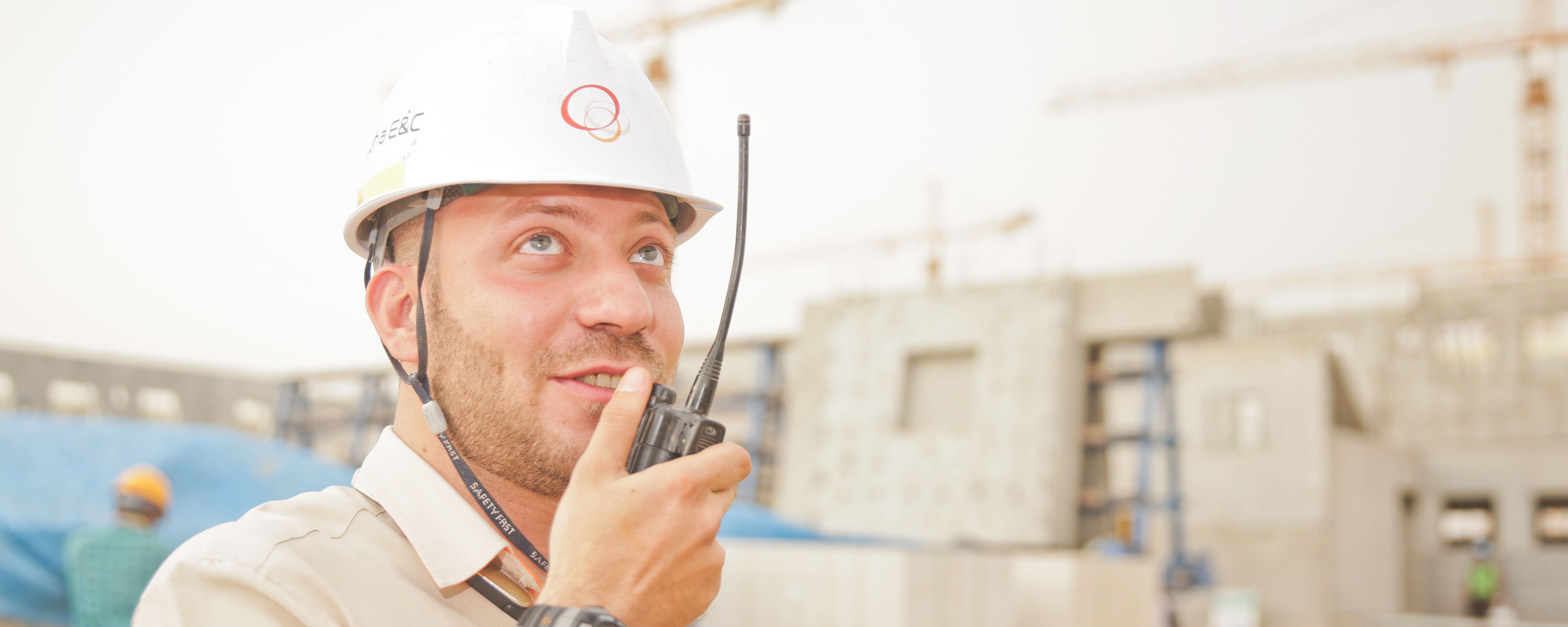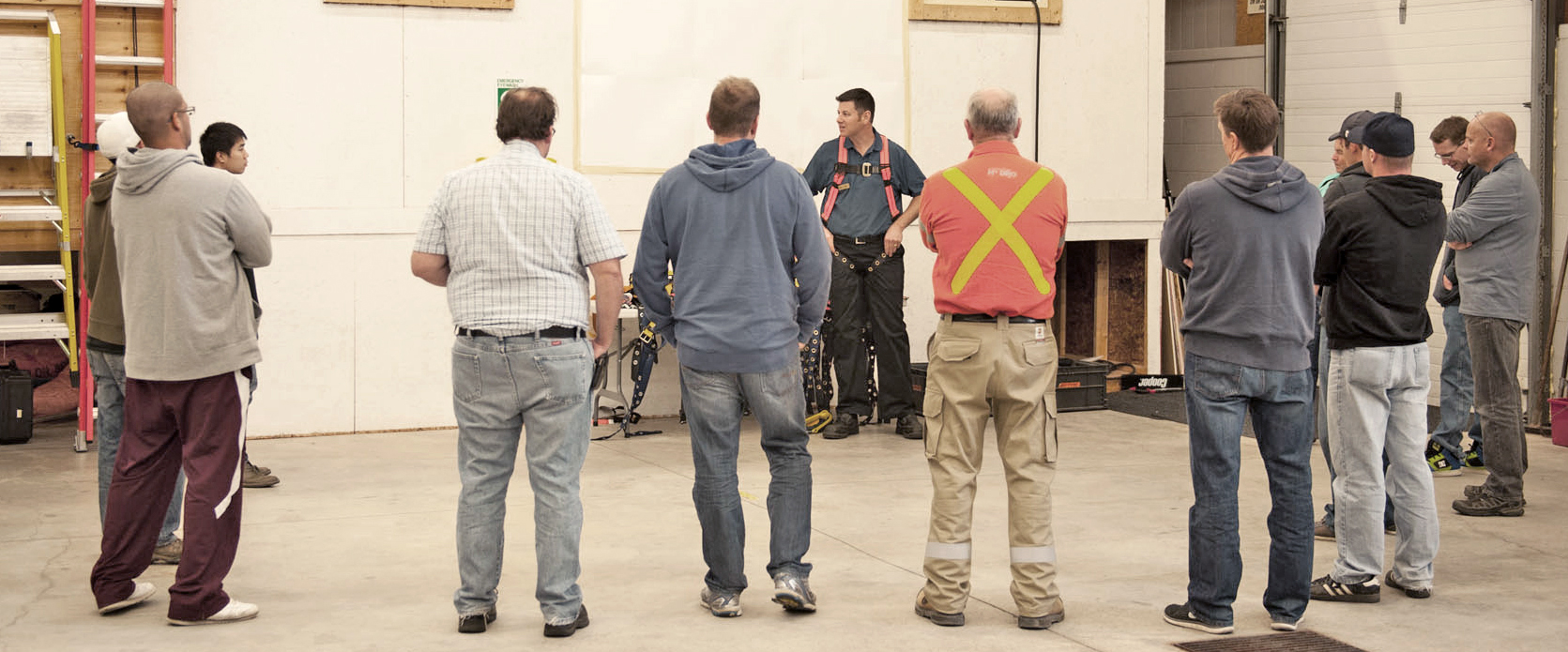
Elevated work platforms (EWPs) are also known as scissor and boom lifts. They allow workers to temporarily work at heights, and require proper know-how and training to use safely. Read on to discover three things you need to know if you work with elevated work platforms, and trust the experts at ACUTE for all your workplace safety needs – contact us today!
Elevated Work Platforms: 3 Things You Need to Know
EWPs such as scissor lifts and boom lifts – also known as aerial work platforms – can be safe solutions to working at height challenges. Unfortunately, lack of training, improper use of equipment, and defective equipment have led to serious incidents involving workers in Ontario. Here, then, are three things you need to know to ensure maximum safety while using elevated work platforms, and for further reading, be sure to check out our 2018 Guide to Ontario Working At Heights Training.
1. Elevated Work Platforms: What You Should Inspect
At the beginning of each shift, the following should be inspected:
- the correct loading capacity for that day’s job
- overall frame condition
- uncontrolled motion
- loose connections or missing fasteners
- improper adjustments
- cracked welds
- broken or fraying wire ropes
- damaged electrical wires, hydraulic, or pneumatic lines
- inefficient brakes
- poor tire condition and pressure
- missing load capacity postings
- adequate fuel supply
- damage to ladder or steps
- broken safety devices (horns, emergency controls, gates, fall protection, anchorage points, etc.)
You can watch this video if you need help pinpointing these areas:
A log should be kept of all inspections and repairs, and you should report all concerns and have the issue repaired before using the elevated work platform. More general inspections are required on an annual or “hours of use” basis.

Make sure the elevated work platforms are inspected before every use.
2. What You Should Do Before Raising the Elevated Work Platforms
You can’t just begin working and immediately put the elevated work platforms to use; there are actually quite a number of things to check prior to beginning the tasks at hand. They include:
- Check for overhead obstructions and electrical wires. Regulations set minimum distances that platforms must be from electrical wires.
- Place on a firm and level surface only.
- Position outriggers or stabilizers.
- Install platform guardrails properly and check that gates or openings are closed.
- Retract the extendable platforms before raising or lowering the device.
- Make sure all controls are clearly labelled with action and direction.
- Ensure that barriers on scissor-type lifting mechanisms are in place to prevent entry.
- Ensure that ropes, electrical cords and hoses will not get tangled in the work platform.
- Load platform evenly according to manufacturer’s instructions.
- Do not trap the operator between the platform and the structure (e.g., the operator becomes trapped in a confined space and may not be able to reach the controls).
- Do not overload platform.
- Do not allow workers on or near the platform during raising or lowering.
- Ensure that the proper fall protection equipment is available and used by trained workers, and designated tie-off point is determined.
You should also be aware of potential hazards in the area, such as ditches, drop-offs or holes, bumps and obstructions, debris, untamped earth fills, overhead obstructions and electrical wires, moving vehicles or oncoming traffic, hazardous atmosphere, and weather conditions.

Be aware of potential hazards when operating elevated work platforms.
3. Helpful Tips You Should Remember
There are a few basic tips you should remember when using elevated work platforms. First, always follow the manufacturer’s operating instructions, as well as the manufacturer’s guidelines for maintenance and operation of both the engine and hydraulic systems. Second, ensure that operator controls are at platform level and remain accessible to the operator while placing emergency override controls at ground level. And thirdly, be sure to lock the wheels and use outriggers with adequate sole plates.
Additionally, you should only operate the lift if you have received appropriate training. Using ACUTE’s Elevating Work Platforms course as a model, you should be well versed and certified in legislation and standards, hazards and safe work practices, platform stability, classes and features, safe operating procedures, inspections, and class-specific skill testing before stepping into a lift. This is to be accomplished through both classroom interaction with experienced instructors and hands-on training on a specific class of EWP.
For more on ACUTE’s Elevating Work Platforms course, click here.

Anyone who will be operating elevated work platforms must have the necessary training.
Trust ACUTE for Safety on Elevated Work Platforms
With over 100 years of combined industry experience, you can trust that with ACUTE, you will experience only the best comprehensive, hands-on Elevated Work Platforms training. Here are some ways that ACUTE goes beyond government compliance in Ontario health and safety training.
- Open Door Instructor-Student Partnersh
 ip: ACUTE’s training services emphasize client participation. Staff foster relationships with clients and serve as a touchstone for advice moving forward.
ip: ACUTE’s training services emphasize client participation. Staff foster relationships with clients and serve as a touchstone for advice moving forward. - Serving Your Team and Industry: With a vast array of clients in the manufacturing, construction, health, academic, and government sectors, ACUTE brings the best safety practices from across the spectrum to your workplace.
- 100 Years Combined Experience: ACUTE provides comprehensive health and safety training, on-site safety services, and consulting services. With over 100 years of combined experience, our staff offers more than theoretical or abstract ideas. ACUTE offers solutions.
- Track Record of Success: ACUTE is rated 4.9/5 stars on Google reviews, demonstrating a commitment to our clients, quality, and a passion for training.
I was dreading the idea of having to spend 8 hours doing the mandated Working at Heights training. I began the training with the expectation that it would be dry and common sense. What I experienced was just the opposite. The training was extremely interesting and much more informative than I expected. Mike is a gifted presenter whose passion for this work and expertise in his field is obvious. If you need safety training of any kind, be sure to use ACUTE. We will most certainly be repeat clients for our business safety training needs.
ACUTE Environmental & Safety Services provides a wide range of employee safety training courses and is located in Waterloo, Ontario. Acute services customers from cities such as Toronto, Mississauga, Brampton, Hamilton, Milton, and from across Ontario and North America.
Source: https://www.ccohs.ca/oshanswers/safety_haz/platforms/elevatingplatforms.html


